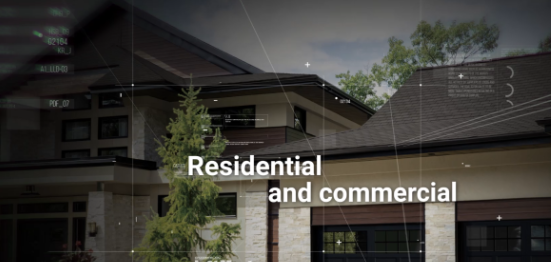A garage door is one of the largest and heaviest moving components in your home, yet it’s often overlooked until something goes wrong. A malfunctioning garage door can cause inconvenience, disrupt your daily routine, and potentially pose safety risks. In this article, we’ll explore the common issues that can arise with garage doors and provide essential tips for repair and maintenance.
1. Common Garage Door Problems
- Broken Springs
One of the most common issues with garage doors is a broken spring. Garage door repair are responsible for counterbalancing the weight of the door, making it easy to open and close. Over time, these springs can wear out or break due to regular use or metal fatigue. If you notice that your garage door is unusually heavy or won’t open completely, the springs may be damaged. - Malfunctioning Opener
The garage door opener is a motorised device that controls the opening and closing of your garage door. If your opener isn’t working, the door won’t move. Common causes include power failures, faulty wiring, or issues with the remote control. Sometimes, the opener’s safety sensors can get misaligned, causing the door to malfunction. - Misaligned Tracks
The tracks that guide your garage door must remain in perfect alignment for the door to open and close smoothly. If these tracks become bent or misaligned, the door may get stuck, make strange noises, or even come off track entirely. This issue can be caused by physical impact, debris, or wear and tear. - Broken Cables
Garage doors are equipped with steel cables that help lift and lower the door. Over time, these cables can wear out, snap, or become frayed, causing the door to become unbalanced. If you see a broken cable or notice the door slanting to one side, it’s important to address this issue promptly. - Worn-out Rollers
The rollers help the door move smoothly along the tracks. If they become worn or damaged, the door may start to make grinding or screeching noises. This can also lead to difficulty in opening or closing the door. Regular lubrication and roller replacement can prevent this issue.
2. DIY Garage Door Repairs vs. Professional Help
While there are a few minor repairs that homeowners can handle, most Garage door repair should be left to professionals due to the complexity and potential safety risks. Here’s a quick guide to help you decide whether to attempt a repair yourself or call in an expert:
DIY Repairs
- Replacing the batteries in the remote: If your remote isn’t working, start by replacing the batteries.
- Lubricating the moving parts: Periodic lubrication of the rollers, tracks, and springs helps maintain smooth operation.
- Cleaning the sensors: The safety sensors on your garage door opener can get dirty, causing them to malfunction. Wipe the sensors with a soft cloth to ensure they are functioning properly.
Professional Repairs
- Replacing broken springs: Garage door springs are under extreme tension, and attempting to replace them without proper tools and knowledge can be extremely dangerous.
- Track alignment and cable repair: If the tracks are misaligned or the cables are broken, it’s important to call a professional, as these repairs require specific expertise and equipment.
- Opener repair or replacement: If your opener is malfunctioning, it’s best to have a professional diagnose and fix the issue, especially if the opener is beyond repair and needs to be replaced.
3. Preventive Maintenance Tips
The best way to avoid costly repairs is through regular maintenance. Here are a few steps to keep your garage door in optimal condition:
- Inspect the door monthly: Check for any visible signs of wear, such as frayed cables, bent tracks, or loose hardware. Look for any unusual noises during operation, as they could indicate a potential problem.
- Lubricate the moving parts: Use a silicone-based lubricant on the springs, rollers, tracks, and hinges every six months to keep everything running smoothly.
- Test the balance: To check if your garage door is properly balanced, disconnect the opener by pulling the release handle. Manually lift the door halfway and let go. If the door doesn’t stay in place, it’s likely out of balance and needs adjustment.
- Clean the sensors: Wipe the safety sensors with a soft cloth to prevent dirt and debris from obstructing the sensors, which could cause them to malfunction.
- Inspect the weather seals: The rubber seals along the bottom of the door can wear out over time. Replacing them helps keep out dust, dirt, and moisture.
4. When to Replace Your Garage Door
Although regular maintenance can extend the life of your garage door, there may come a time when replacing the entire door is more cost-effective than continually repairing it. Signs that it may be time for a replacement include:
- Frequent breakdowns: If your garage door requires constant repairs and the costs are adding up, it may be more economical to replace the door.
- Outdated or damaged appearance: An old, worn-out door can negatively affect your home’s curb appeal. Replacing it with a new model can increase your home’s value.
- Energy inefficiency: Older garage doors often lack proper insulation, resulting in higher energy bills. Upgrading to an energy-efficient model can help improve your home’s overall insulation.
5. Conclusion
Maintaining and repairing your garage door is essential to ensure it operates safely and efficiently. Whether you’re dealing with a broken spring, malfunctioning opener, or misaligned tracks, addressing the issue promptly can save you time, money, and stress. While minor repairs can often be handled by homeowners, more serious issues should always be entrusted to professionals. Regular maintenance can help prolong the life of your garage door and avoid unnecessary repairs, keeping your home secure and your daily routine uninterrupted.

